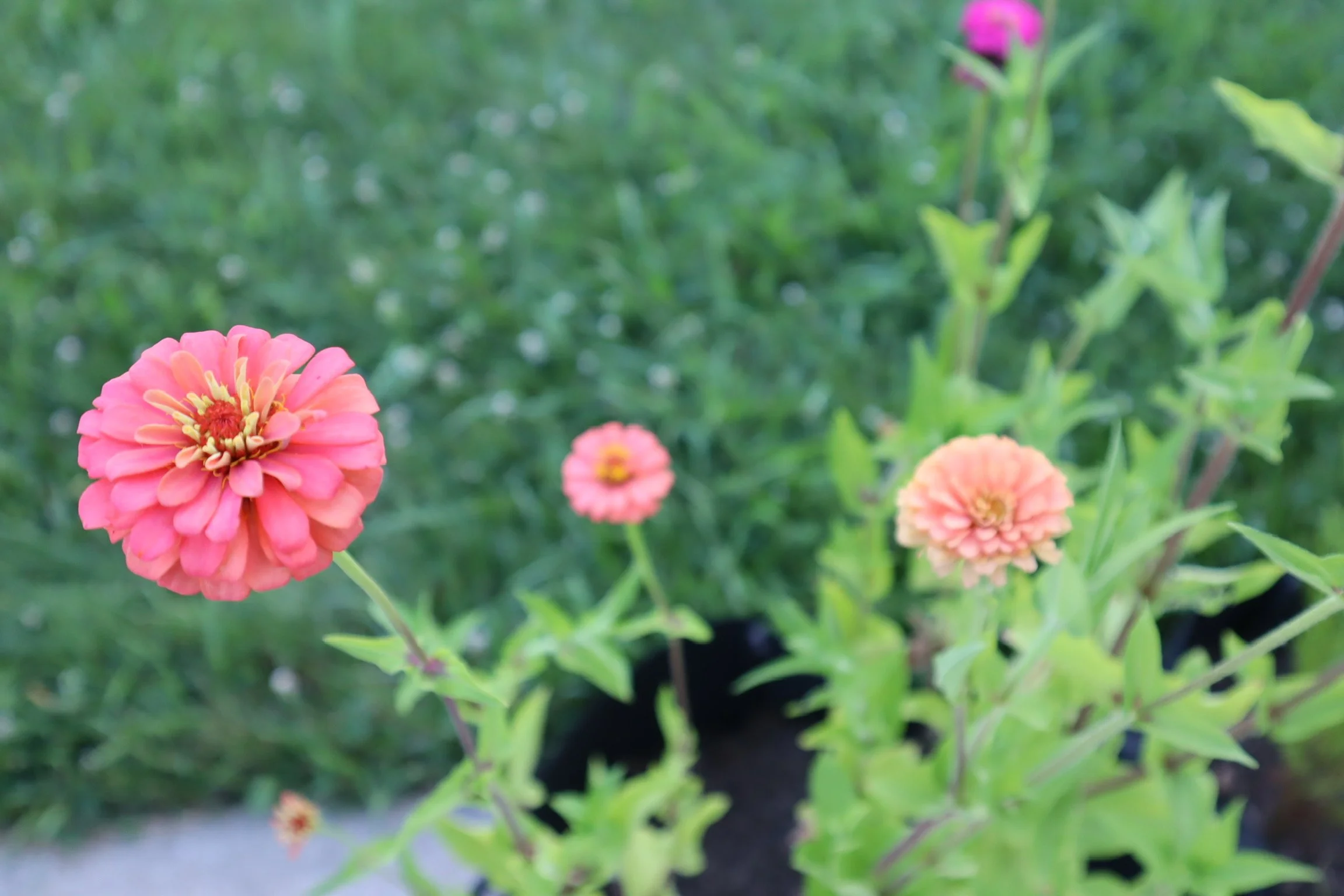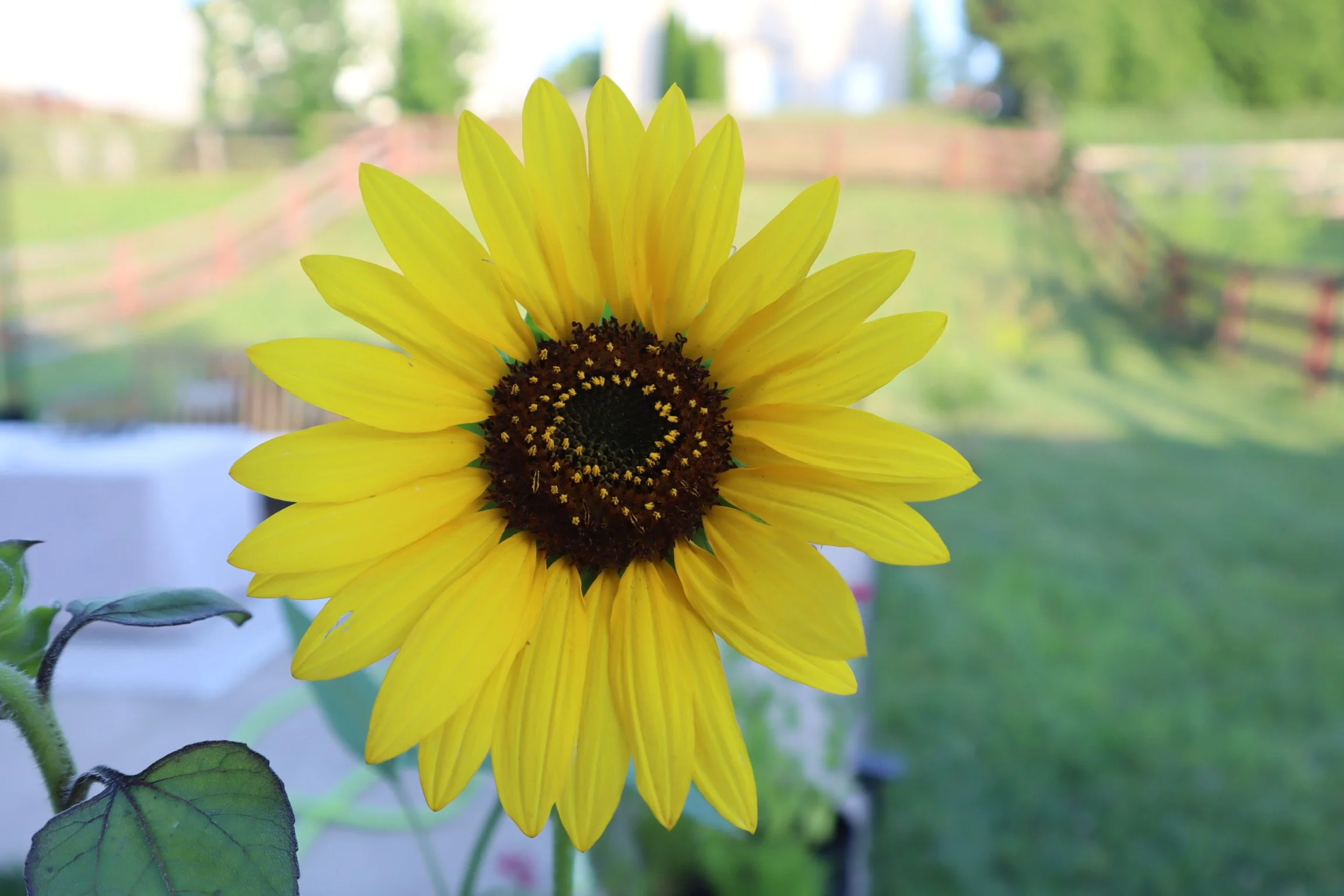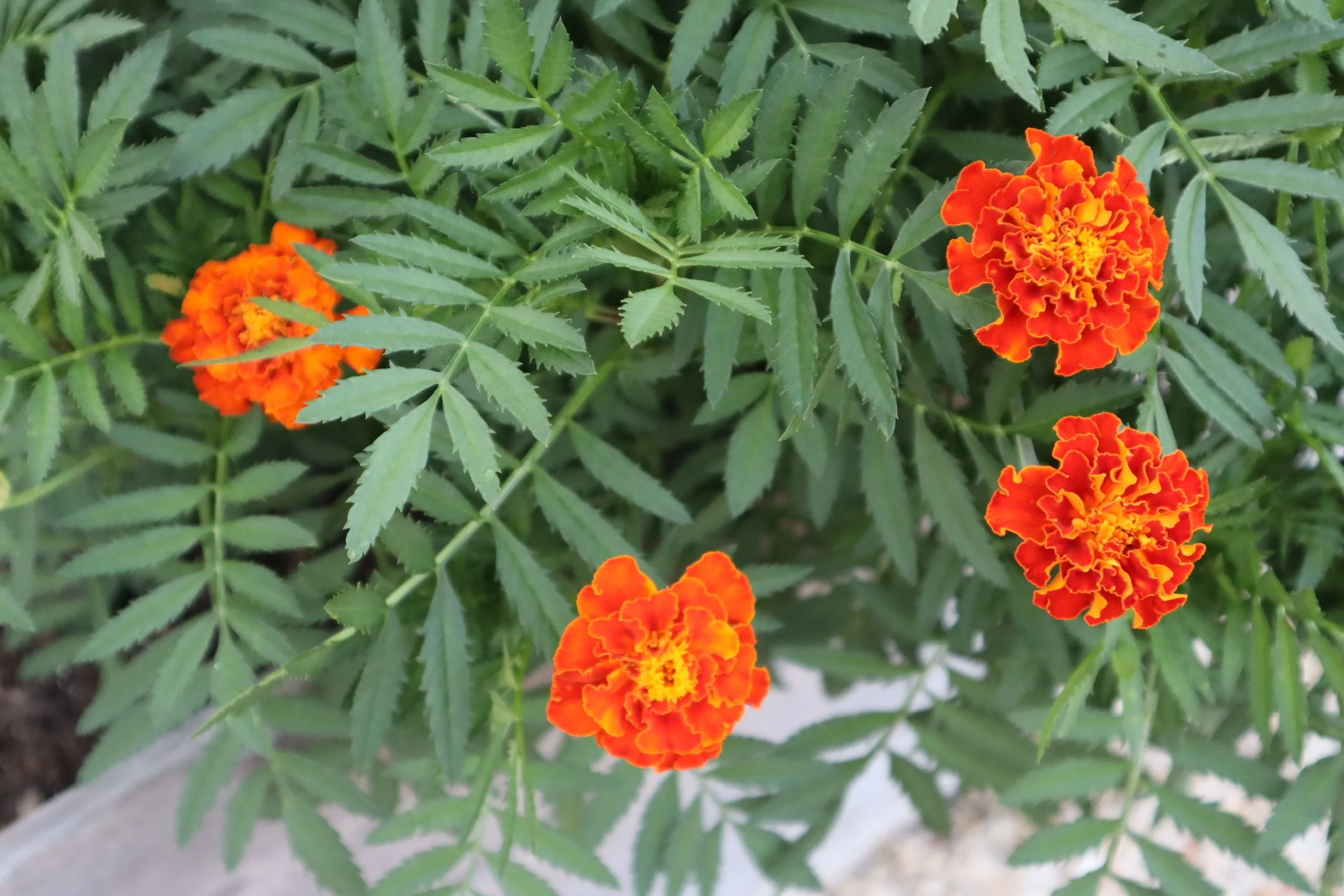The Flowers We Grew (and Why We’ll Keep Growing Them)
There’s something about flowers that makes a garden feel more complete — more alive. The way they move in the breeze, light up with color, and quietly invite butterflies and bees to visit… it’s one of my favorite things to watch unfold each season.
Last year, we started small. We chose just three kinds of flowers to grow: zinnias, cosmos, and sunflowers. They were easy to plant from seed, beautiful to look at, and helped attract pollinators to our vegetable garden. We didn’t realize at the time how much joy they’d bring, but by the end of the season, we knew we wanted more.
This year, we expanded. We added snapdragons, marigolds, and lavender to the mix — and so far, it’s been a wonderful decision. Not only is the garden more colorful and fuller of life, but it also feels more balanced. Bees are busy, butterflies are fluttering, and everything is thriving a little more because of it.
Here’s a look at the flowers we’re growing this year — and why they’ve each earned a permanent place in our garden.
Zinnias: The Cheerleaders of the Garden
Zinnias were our very first flower success story. They’re bold, colorful, and bloom like crazy. Even just a few plants can fill a garden bed with cheer. We grew them from seed again this year in a mix of pinks, oranges, and yellows — and once again, they’ve been nonstop bloomers.
Why we keep growing them: They’re low-maintenance, long-lasting, and perfect for cut bouquets. You really can’t go wrong with zinnias.
Pollinator Bonus: Butterflies love zinnias, and bees visit them constantly. Their flat, open faces make it easy for pollinators to land and feed.
Cosmos: The Gentle Dancers
Cosmos have this soft, fluttery quality that adds instant charm to the garden. They’re tall, delicate, and always seem to be moving with the breeze. We grew them last year and loved them so much we brought them back in full force — and they’ve delivered again.
Why we keep growing them: They add height, movement, and that airy cottage-garden feel — plus they bloom for months.
Pollinator Bonus: Cosmos attract bees, butterflies, and hoverflies. They’re especially great for filling in spaces and keeping the garden buzzing well into late summer.
Sunflowers: The Bold Giants
We planted a few sunflowers last year just for fun — and immediately wished we’d planted more. This year, we did. Their tall stalks and golden faces are impossible to miss, and they bring such a bright, hopeful energy to the garden.
Why we keep growing them: They make a statement, bring joy, and attract birds as well as pollinators.
Pollinator Bonus: Bees love them while they’re blooming, and once the seeds mature, birds like finches come by to snack.
Snapdragons: The Whimsical Wonders
Snapdragons were new for us this year — and we’re so glad we tried them. We planted soft pastel shades, and their unique “snapping” blooms brought an extra touch of charm. They’ve bloomed well and have added early-season color we didn’t have before.
Why we’ll keep growing them: They’re playful, nostalgic, and bloom earlier than most of our other flowers — which really helps extend the garden season.
Pollinator Bonus: Bumblebees especially love snapdragons and are strong enough to open their flower “mouths.”
Marigolds: The Little Guardians
We added marigolds around the edges of our beds this year — and they’ve done exactly what we hoped. They’re cheerful, bright, and seem to stand guard over everything else. Their scent helps keep pests away, and they’ve been blooming nonstop.
Why we’ll keep growing them: They’re hardworking and full of color. Plus, they’re easy to start from seed and bloom quickly.
Pollinator Bonus: Marigolds attract helpful insects like hoverflies and some bee varieties — and they work beautifully as companion plants for veggies.
Lavender: The Calming Presence
Lavender was one of the new additions we were most excited about. So far, the plants are growing strong — tall and silvery — but haven’t quite bloomed yet. Even without the flowers, they’re already adding beauty and softness to the garden, and we’re eagerly waiting for that first burst of purple and scent.
Why we’ll keep growing it: Lavender adds calm, structure, and once it blooms, we know it will be a favorite for both us and the bees. We can’t wait to dry some for the house, too.
Pollinator Bonus (soon!): Lavender is a favorite among bees, especially during midsummer when other blooms start fading. Once those flowers open, they’ll be buzzing with activity.
Tips for Creating a Pollinator-Friendly Garden
Over the past two seasons, we've learned that growing flowers isn’t just about beauty — it’s about building a living, breathing space that supports everything around it. When you grow with pollinators in mind, your garden becomes more vibrant, your vegetables often produce better, and you get to enjoy the hum of life that fills the air.
Here are some simple, thoughtful ways to make your garden more inviting to bees, butterflies, hummingbirds, and other helpful friends:
1. Plant a Variety of Flowers
Different pollinators are drawn to different colors, bloom shapes, and heights. Bees love wide, open flowers like zinnias. Butterflies prefer flat landing spots like cosmos. Hummingbirds go for tubular blooms like snapdragons. The more variety you include, the more pollinators you’ll attract — and support.
Try this: Include a mix of shapes (open, tubular, clustered), a range of heights, and colors like purples, blues, oranges, and yellows — all of which are especially attractive to pollinators.
2. Stagger Bloom Times
One of the best things you can do is plant flowers that bloom in different seasons so there’s always something in bloom from early spring to late fall. This provides a continuous food source for pollinators when they need it most.
Try this:
Early season: Snapdragons, herbs like chives or thyme
Midseason: Zinnias, cosmos, lavender (once it blooms!)
Late season: Marigolds, sunflowers (toward the end when seeds form)
3. Ditch the Pesticides
Even natural or organic sprays can harm the very pollinators you're trying to attract. It's worth trying alternative solutions that create balance in your garden without putting bees and butterflies at risk.
Try this:
Use companion planting (like marigolds with tomatoes) to naturally deter pests
Encourage beneficial insects like ladybugs and hoverflies
Accept that your garden doesn’t have to be perfect — a few bug-nibbled leaves are a sign of life
4. Offer Water Sources
Pollinators need water, especially in the summer heat. A shallow dish filled with pebbles and fresh water gives bees and butterflies a safe place to land and drink.
Try this: Use a small terracotta saucer or even a plant pot tray. Add rocks so pollinators don’t drown, and change the water often to keep it clean.
5. Let Your Herbs Bloom
Flowering herbs are a secret weapon in a pollinator garden. Bees especially love basil, oregano, thyme, and mint when they go to flower. Letting just a few herb plants bolt can turn them into pollinator magnets.
Try this: Let one or two of your herb plants flower on purpose near your flower beds or veggie garden — and watch the bees roll in.
6. Create Clumps, Not Just Scattered Flowers
Pollinators are more likely to visit areas where there’s a concentration of blooms. A few larger patches of flowers can be more effective than lots of single plants scattered around.
Try this: Group your flowers in clusters or drifts — like a row of zinnias, a patch of cosmos, or a corner filled with lavender. It makes it easier for pollinators to forage and creates more visual impact too.
Final Thoughts
Starting with zinnias, cosmos, and sunflowers last year showed us how much life just a few flowers could bring to our garden. Expanding with snapdragons, marigolds, and lavender this season has only deepened that joy. Every time we step outside, the garden feels fuller — not just with color, but with movement, energy, and peace.
Even though our lavender hasn’t bloomed yet, just watching everything else grow and thrive has been so rewarding. We’ve learned that when you make room for flowers — and the pollinators they invite — you get a garden that’s not only beautiful, but truly alive.
By Leah Ann Grace







